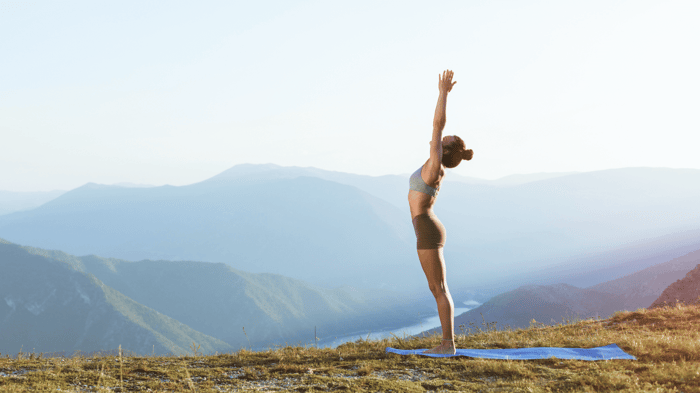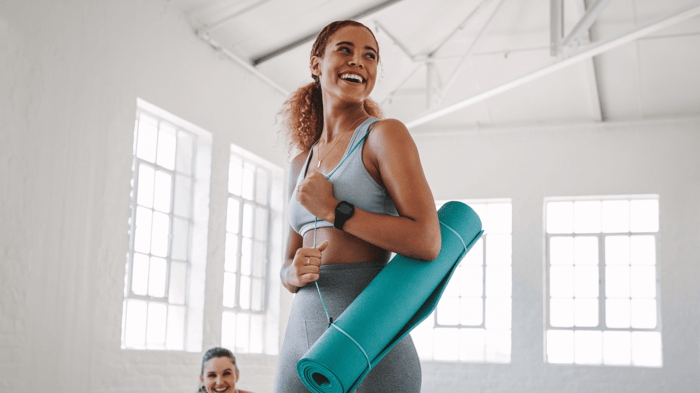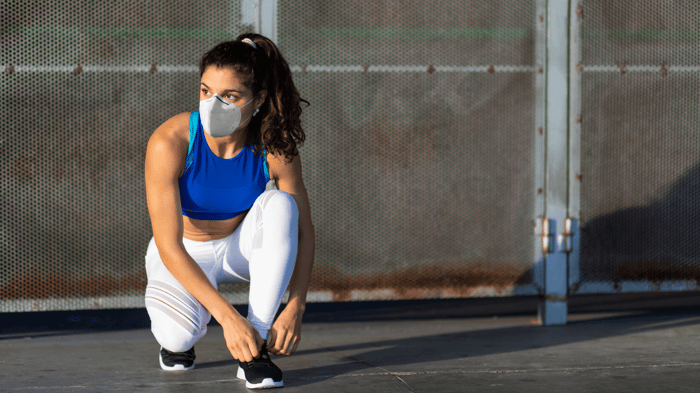
Have you ever thought about working out your veins?
Adding more movement into your day is the single best thing you can do to keep your veins healthy. When you’re walking, stretching, or moving in any way, your skeletal muscles squeeze blood back up to your heart (like a tube of toothpaste!), relieving pressure on your venous valves.
If you build a lifestyle to support great circulation and protect your valves, you can relieve the symptoms of vein disease--or even put off their onset. Twisted, swollen, painful varicose veins can really harm quality of life, so any remedy to lessen their impact is worth considering!
Yoga, for example, can be a powerful tool to improve your circulation. By elevating and stretching your legs, you’ll send blood back to your heart, giving a big boost to your vein health. Give these vein-healthy poses a try!
5 Poses for Healthy Leg Veins
Many asanas or poses use gravity to help move blood and lymph through the body and back to the heart, boosting circulation. This can alleviate pain caused by venous insufficiency. Any poses with leg elevation are especially helpful, but all poses that push fluid and energy through the body will help provide relief.
While yoga will probably not cure varicose veins, it can improve many symptoms and prevent them from worsening. Remember to focus on your breathing to get the maximum benefits from the poses.
Standing Forward Fold (“Touching your toes”)

Good for: This basic pose enhances circulation throughout the body and provides a good stretch to the backs of the legs. It also tones the legs and soothes the nervous system.
How to do it: Stand with feet hip-width apart and arms at your sides. As you inhale, raise your arms overhead, stretching and gazing upward. On the exhale, fold forward at the waist. Allow your knees to bend slightly and relax your entire upper body--including your face, jaw and neck.
Reach your hands down between your feet, wrap your fingers around your big toes, or grab onto opposite elbows and hang heavy. Breathe in and out 5-10 times and then return to the starting position.
Legs-Up-the-Wall Pose
Good for: This partial inversion is super relaxing for your legs and can help release stress and pain. It flushes out aggravating toxins and uses gravity to return blood to the heart.
How to do it: Lie down on your back and scoot your bottom to the wall. Send your legs straight up, using the wall for support. Breathe in and out for 5-10 breaths or until you feel the tension leave your legs.
Supported Shoulder Stand

Good for: This pose is a full body inversion that forces the whole body--core, legs, and shoulders--to work against gravity, enhancing circulation. It will use gravity to help clear pooling blood in the veins.
How to do it: Lie flat on your back and lift your legs straight up. Bump your hips up in the air and catch your waist--your shoulders, neck, head, and triceps make contact with the ground as your hands, positioned on your lower back, support your lower body in the air.
Straighten your legs, point your toes, and glue your thighs together. Be careful not to crunch your neck by keeping some space between your chin and chest. Hold for 5-10 breaths and then slowly roll down to lie on your back.
Wind-Relieving Pose

Good for: This pose helps move stagnant lymph and blood. It tones the muscles in the core, arms and legs and increases flexibility in the spine. It also improves circulation in the hip area and relieves back tension and pain. Finally, it can help release gas trapped in the intestines--hence, its name!
How to do it: Lie flat on your back with legs extended. Bend your right leg into your chest, using your hands to pull your leg in. Think of pulling your belly button down towards the floor. Hold here for 4-5 breaths, then lift your head and bring your chin towards your chest as you continue to pull the leg in with your hands. Hold for several deep breaths. Release your leg and extend it out. Repeat this sequence with your left leg, and then with both legs at once.
When you’re curled into a small ball, with both legs pulled into your chest and head tucked in, rock side-to-side 5-10 times and then forward and back 5-10 times. This provides a gentle massage for your lower back and spine. Release the pose back to lying flat with legs extended.
Supported Headstand
Good for: This is a more advanced inverted pose. It builds strength in the core and spine and relaxes the nervous system while boosting energy levels. Don’t attempt this pose until you are comfortable with arm balances, like crow pose, and inversions like supported shoulder stand.
How to do it: Start by interlacing your fingers and resting your forearms and clasped hands on the mat in front of you. Your elbows should be in-line with your shoulders and your hands should form a cup.
Place the crown of your head down on the mat with the back of your head in your cupped hands. Press your forearms down as you lift our knees up off the mat, pushing with your toes.
As you exhale, lift your feet upwards and extend your legs. Hold the pose for as long as you can, target 10-15 deep breaths. Bend your knees and roll out of the pose. Note: It is easier for beginners to start practicing headstands up against a wall for support.
These are just a few great yoga poses to start practicing daily for healthier veins. Once you start you will find which poses feel great for you and are the most helpful for any symptoms you have. The best thing about yoga is that it’s easy to do at home with no equipment. It only takes a few minutes to get into a pose and you'll start feeling benefits immediately.
Along with daily yoga, other healthy habits to keep veins in prime condition include taking walking or stretching breaks throughout the day and elevating your feet when resting. If you already have varicose veins, use compression stockings and heat compresses for relief. Remember that sitting too much is a big roadblock for healthy veins, so get moving!

.JPG)


